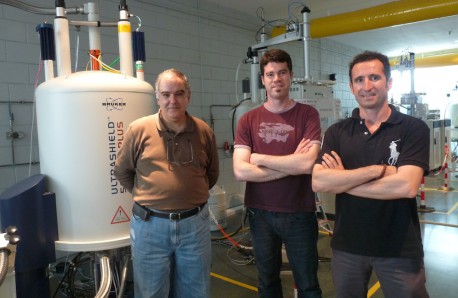Nuclear Magnetic Resonance Unit

THE UNIT IN 2013
The Nuclear Magnetic Resonance (NMR) Unit provides researchers with access to automatic or manual NMR experiments. It also advises researchers about which experiment will be most appropriate to their needs. It trains and teaches researchers about how to use NMR, what information can be obtained from NMR experiments and how to optimize the instrumental resources available, from practical details to general NMR knowledge.
The techniques available up to now guarantee access to all kinds of NMR experiments in liquid phase (more than 80) for a wide range of nuclei and in gel phase for the more common nuclei (1H and 13C). The NMR unit has successfully introduced researchers to such uncommon techniques as heteronuclear (mono and bidimensional) experiments, diffusion experiments and kinetic measurements.
In the year 2013, for first time a photochemical reaction was monitored in situ by NMR using a monochromatic source of light introduced into an NMR tube through an optic fiber.
MOST IMPORTANT EQUIPMENT
- Two Bruker® Avance 400
- One Bruker® Avance 500
- One Bruker® Avance III 500 equipped with a cryoprobe.
- Three BACS autosamplers (two with 60 and one with 120 positions) for the three Avance instruments.
- One Bruker® Fourier 300 NMR spectrometer. In combination with a SampleXpress (60 positions) autosampler.